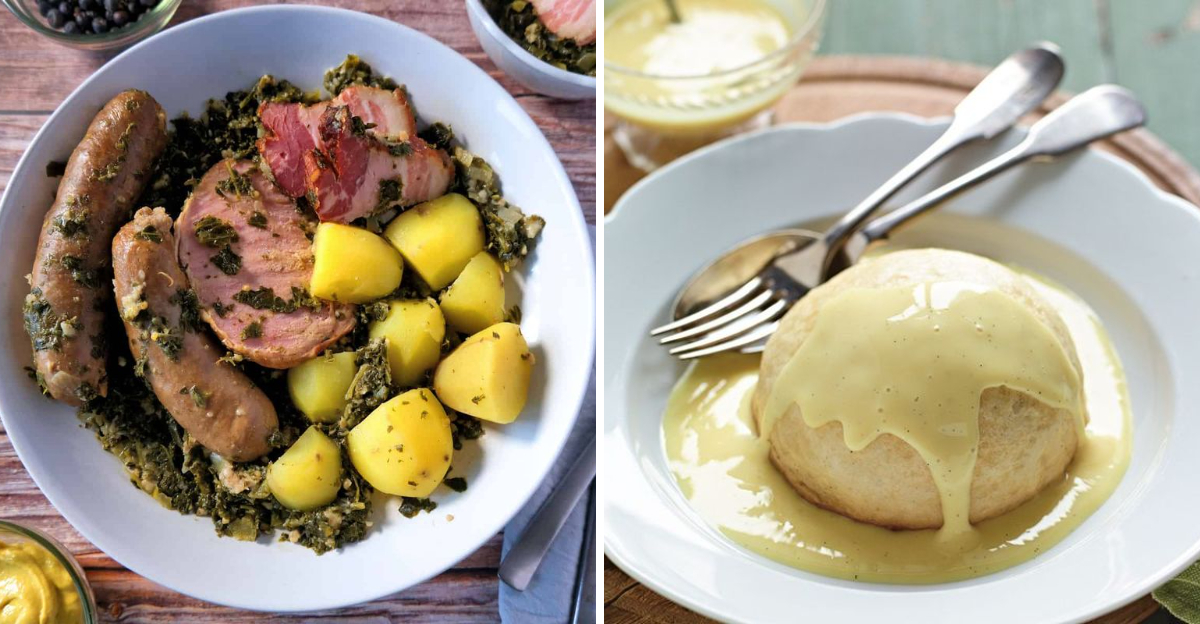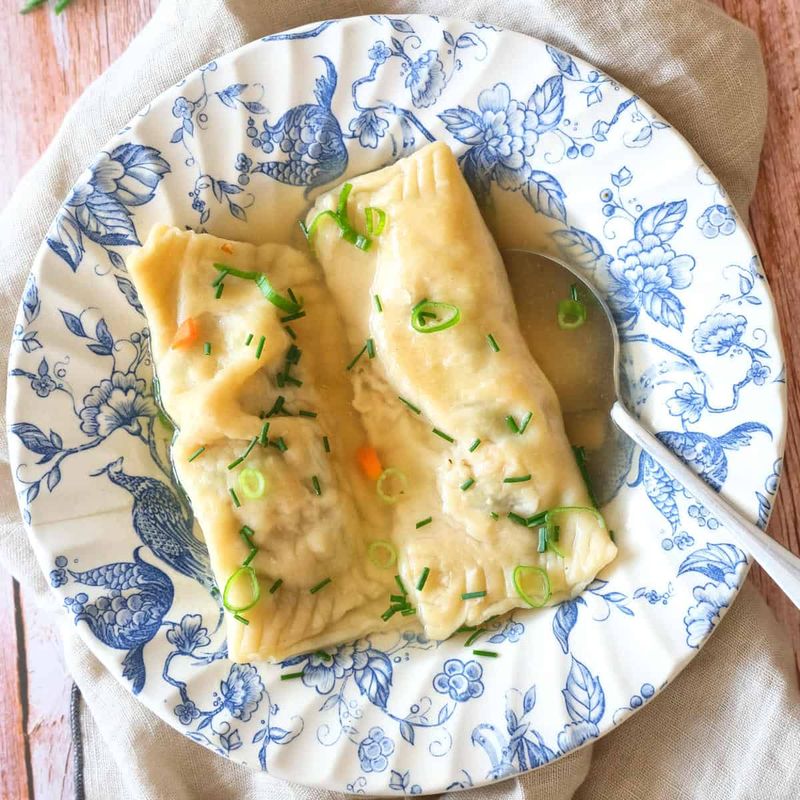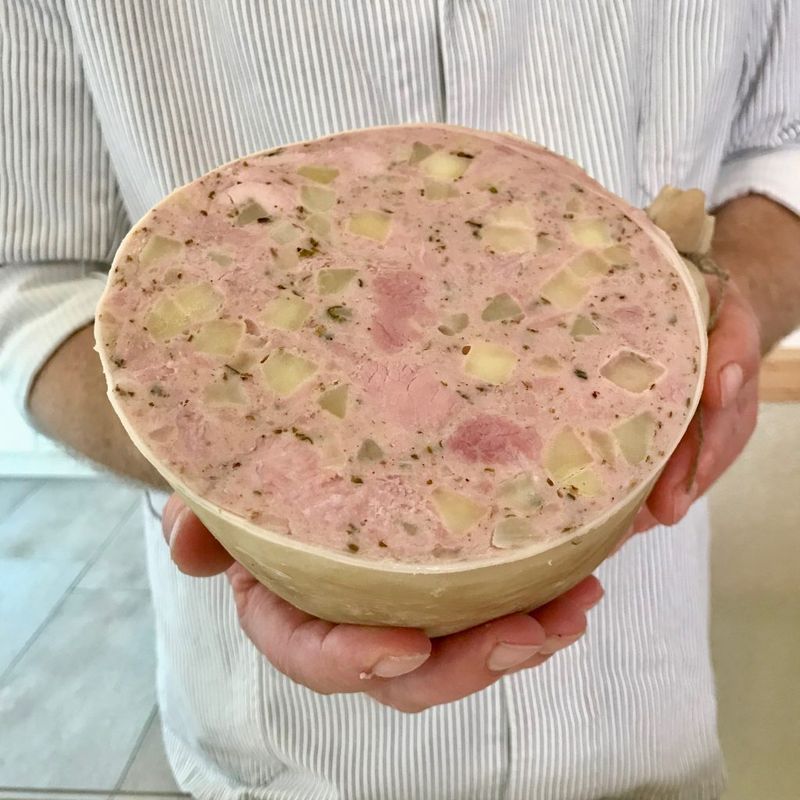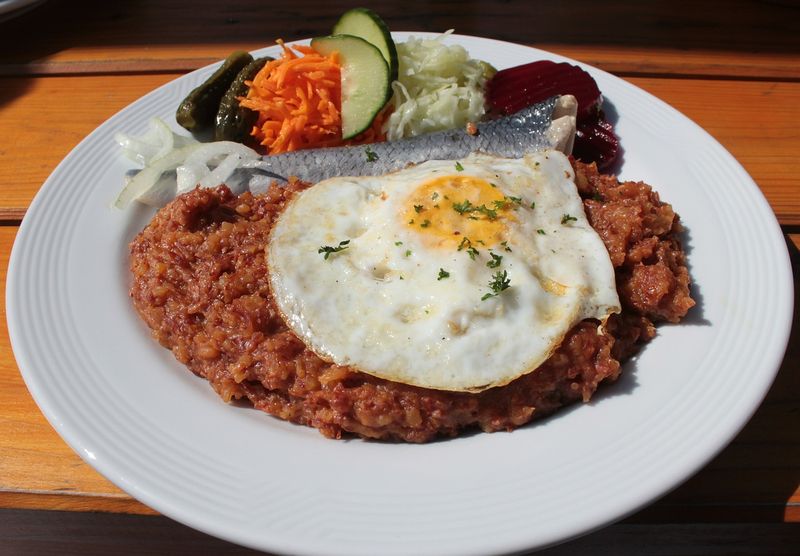6 Hidden German Culinary Specialties You Must Try On Your Trip

Germany is renowned for its beer and sausages, but beneath the surface lies a treasure trove of lesser-known culinary delights. These hidden specialties offer a glimpse into the rich diversity of German regional cuisine. From hearty comfort foods to unique regional flavors, here are six hidden gems you should taste on your next visit.
1. Maultaschen (Swabia/Baden-Württemberg)

Have you ever wondered what German ravioli would taste like? Maultaschen from Swabia is the answer. These large pasta pockets are generously stuffed with minced meat, spinach, onions, and a variety of spices. Traditionally, they’re served in a flavorful broth or pan-fried with onions for an added texture.
Maultaschen offers a hearty and comforting experience, perfect for those seeking warmth in every bite. Some say they were invented to hide meat during Lent, giving them a quirky historical twist. Such tales add a layer of intrigue to a dish already rich in flavor.
2. Grünkohl mit Pinkel (Northwest Germany)

Winter in Northwest Germany calls for Grünkohl mit Pinkel. Imagine kale, not as a mere salad ingredient, but as a robust stew filled with onions and spices. Partnered with Pinkel—a special smoked sausage with oats—this dish is bold and memorable.
The combination of the kale’s earthiness and the sausage’s smokiness creates a flavor profile that’s both surprising and satisfying. Often enjoyed during festive gatherings, it brings warmth and cheer to the table. Culinary folklore suggests it was a farmer’s favorite, bringing history to the plate.
3. Saumagen (Palatinate region)

If the name Saumagen intrigues you, you’re not alone. This dish from the Palatinate region is Germany’s answer to stuffed stomach, filled with pork, potatoes, and spices. Once cooked, it’s either boiled or roasted to perfection.
Despite its unconventional name, Saumagen’s flavor is unexpectedly elegant. It’s dense yet flavorful, offering a culinary experience that defies initial expectations. The dish’s origins are as fascinating as its taste, with links to local traditions and festive celebrations, making it a must-try for the adventurous eater.
4. Schäufele (Franconia/Bavaria)

Fancy a tender pork shoulder with crispy skin? Schäufele from Franconia/Bavaria is the dish to try. Slow-roasted to achieve a perfect balance of juiciness and crispiness, it’s accompanied by potato dumplings and either sauerkraut or red cabbage.
The rich flavors and textures make Schäufele a delight for roast lovers. Its preparation reflects Bavarian culinary traditions, where each bite tells a story of regional pride and heritage. Whether enjoyed in a rustic tavern or a family gathering, it promises an unforgettable experience.
5. Labskaus (Northern Germany)

Ever heard of a sailor’s feast on land? Labskaus from Northern Germany captures the essence of seafaring culinary traditions. This dish combines mashed potatoes, corned beef, onions, and beets, typically topped with a fried egg and served with pickled herring.
The mix of salty, sweet, and savory flavors offers a nostalgic journey through maritime history. It’s a dish that looks unusual but surprises with its comforting taste. Traditionally, it was a staple for sailors, with tales of the sea woven into every bite.
6. Dampfnudeln (Southern Germany)

Imagine a fluffy yeast dumpling, steamed to perfection. Dampfnudeln from Southern Germany are just that. With a crisp bottom and soft top, they offer a delightful texture. Served with vanilla sauce for dessert or savory gravy as a main, they embody sweet-and-savory comfort.
This dish is a testament to culinary versatility, enjoyed in various forms across Southern Germany. Its roots trace back to home kitchens, where love and warmth infused every dumpling. Dampfnudeln are more than food; they’re a reminder of home-cooked simplicity and joy.
